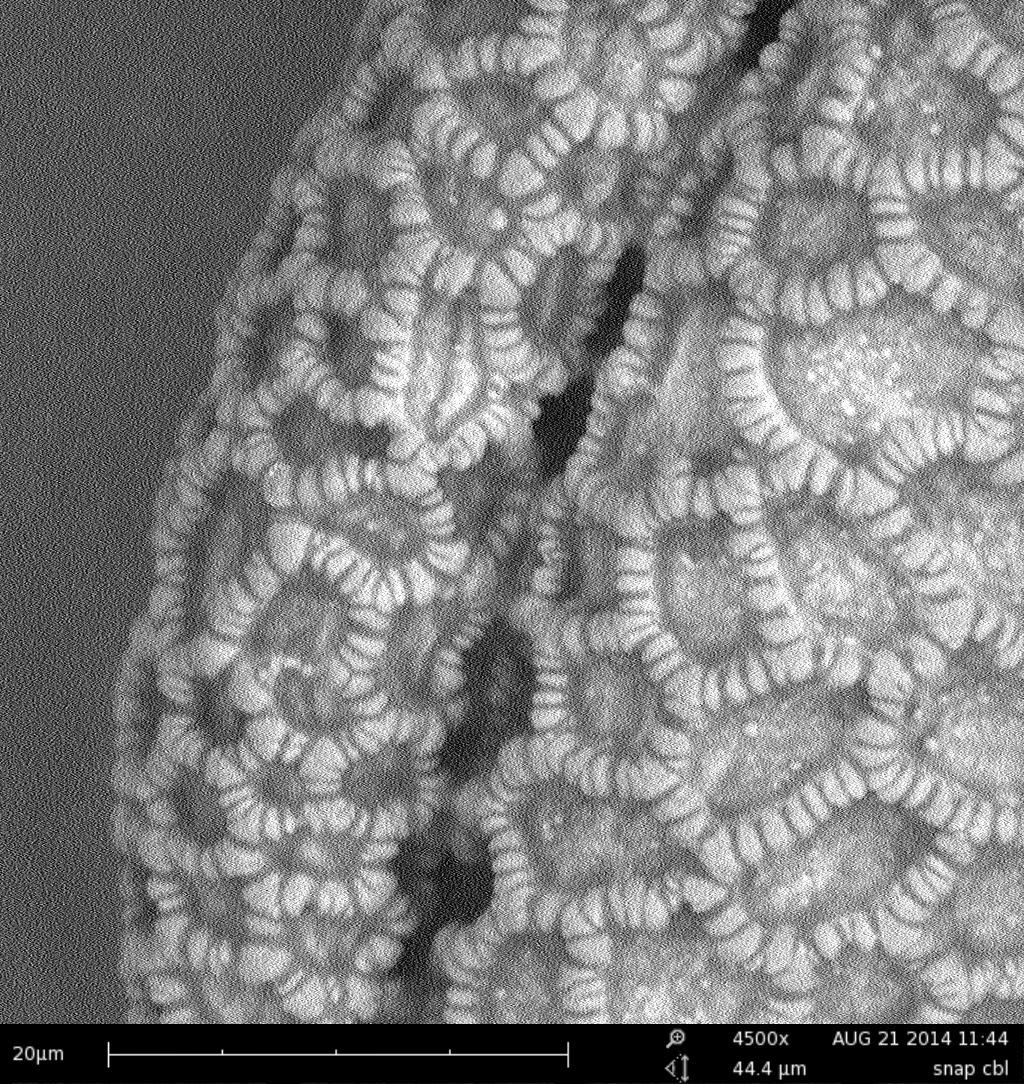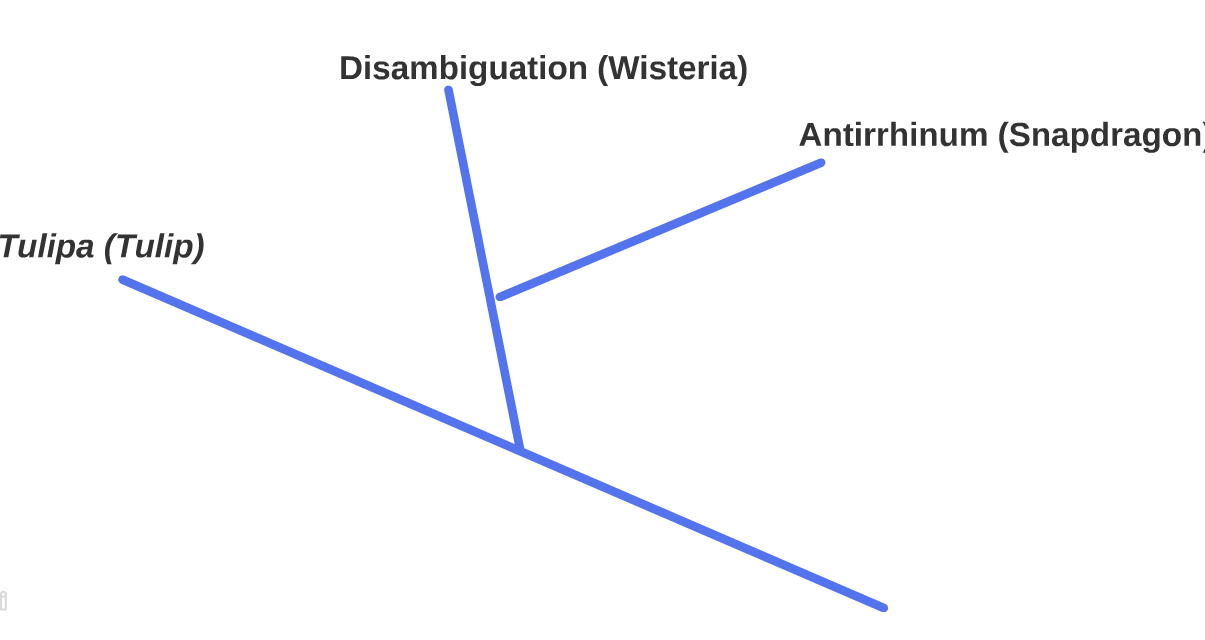pollen evolution
Wednesday, January 7, 2015
Analysis of Phylogenetic Tree
Our phylogenetic trees differed from one another, the tree based off of pollen morphology states that Wisteria and Snapdragon were more closely related, while the tree based off of protein sequences states that Tulip and Snapdragon are more closely related. The phylogenetic tree based on pollen morphology supports our hypothesis in saying that species with multiple flowers per stem are more closely related than ones with one flower per stem. However the tree based on protein sequences states otherwise. The tree on pollen morphology is based mostly on appearance, where as the protein sequence tree is based on the amino acids of the rubisco protein inside the flowers which makes us believe that our hypothesis was incorrect, meaning Tulip and Snapdragon are most closely related and Wisteria is the most distant ancestor. Ultimately the characteristic of having multiple flowers per stem or one flower per stem does not relate to whether different species of flower and their pollen came from the same ancestor or not.
Phylogenic Tree Based on protein sequence
This tree does not support our hypothesis because it says Tulip and Snapdragon are more closely related, and in our hypothesis we said that Wisteria and Snapdragon would be more closely related. We trust this evidence pretty heavily because it shows genetic make-up similarities which is something we can't see by just looking at the pollen.
Procedure
Stub Procedure
- We collected pollen from our three flower specimens: Tulip (Tulipa), Wisteria (Disambiguation), and Snapdragon (Antirrhinum). We did this by using tools such as scalpels to extract the pollen from the anthers of the flowers.
- Next, we placed the pollen of the flowers on three separate portions of a stub for the SEM microscope. We did this by using a paint brush to dust the pollen on on its specific portion of the stub.
Light Microscope Pollen Photos
This is a microscope photo of pollen from a tulip blossom.
This is a photo from the light microscope of an anther from a wisteria blossom.
This is a photo from the light microscope of a pollen sample from snap dragon.
SEM Work
This is a photo of snap dragon from a distance.
This is a photo of piece of snap dragon pollen being measured in the SEM.
This is a close up of one piece of snap dragon pollen.
This is an incredible close up of snap dragon pollen. As you can see, the texture of the pollen is intricate and there's tons of details.
This is an overview of tulip pollen.
This is a photo of a bit of tulip pollen being measured by the SEM.
This is a close up to see the texture the tulip pollen in the SEM. As you can see, both the shape and texture of the tulip pollen is very different from snap dragon pollen.
This is an overview of the anther from a wisteria blossom.
This is a photo of an anther from a wisteria blossom being measured in the SEM.
Lieca microscope
- We scraped pollen from each flower on to the tray for examination.
- We then examined the pollen under the microscope:
Phylogenetic Tree Based on Pollen Morphology
We believe that Wisteria and Snapdragon are related because they are both monocolpate, while tulip pollen is monolete. Since Tulip pollen does not share the same pollen type we gave it its own branch, while Wisteria and Snapdragon share a branch since their pollen types are the same. We observed that Wisteria and Snapdragon pollen also share an oval football-like shape as opposed to Tulip pollen which looks more circular and crinkled. Tulips have one flower per stem, unlike Wisteria and Snapdragon who have multiple flowers per stem, thus we believe that Snapdragon and Wisteria are more closely related to each other than Tulip is related to either species.
Subscribe to:
Comments (Atom)




























